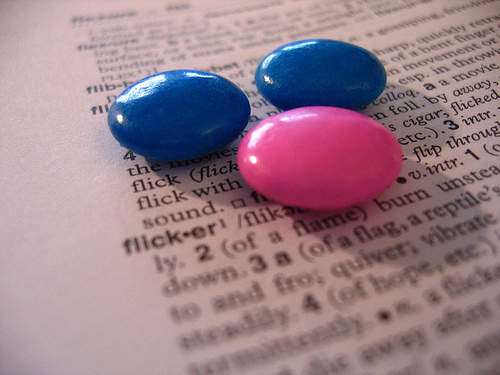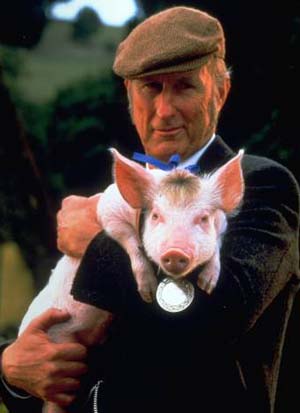The True Essence of Character
While we’re pausing a bit in this in-depth look at your first scene to examine how you introduce your protagonist, I want to add in some insights and prod your thinking about the aspects of your character’s personality. Writing instructor and screenwriter Michael Hague enriches the traditional three-act structure (his is a six-act structure) by overlaying the progressive journey of the protagonist. I found his take quite eye-opening, for although I understood the concept of a character portraying himself to the world one way while underneath he’s really a different person at heart, I never thought about the process of revealing this “inner man” until I took a workshop from him.
Persona vs. Essence
All of us are flawed. Over the years, since childhood, we have developed a “face” we present to the world. Often that face is formed by hurts we’ve suffered early on. We start out all innocent and sweet, and then after a few of life’s hard knocks, we hide behind a persona that feels safe. A true hero’s journey will show the process of the hero moving from his persona to his true essence by the end of the story. And this is a great model for novelists.
Almost all great stories show the protagonist at the start of the book in his normal world. This is the place in which he functions, interacts with others, and makes his way through life. But if you’re telling a rich story, there’s going to be something wrong with this picture. Even if this character seems happy, we can tell he’s really not. And it really doesn’t have to do with his visible goal established at the outset. Oh, they are interconnected, and the goal should be a vehicle for helping your character “find himself.” But reaching his visible goal isn’t the real thing that will make him truly happy. Every person who is not living in his or her true essence is going to be unhappy.
So your character should reveal this in the first chapter somewhere. Not that they’re miserable and glum. You can have a really happy character step onto the stage. What I’m talking about here is showing some aspect of the character’s persona (the face he presents to the world) that is not really him, not how he truly feels, and is the source of some dissatisfaction in his life because, well, he’s being phony in at least some way.
Who Really Is My Hero?
Here’s a question you can ask: “Who would my hero be if he could really find the courage to [or was forced to] strip away his outward personality and reveal his true self?” A great story hints at the start that the protagonist has the potential to be something else, something better, something more true.
This ties in with last week’s post about the glimpse of greatness. Readers love to see something redeemable in humanity. Even with the darkest of antagonists, there’s nothing richer and more engaging than seeing a human, authentic side. Think Darth Vader. So, the journey of your hero from start to finish in the story would be one of him starting fully in his persona and ending in a place where he embraces and lives fully in his true essence.
Shrek Is Really Not Who He Thinks He Is
Shrek embodies the perfect example of this journey. Shrek presents himself to the world as a mean old ogre. That’s how he survives. He denies his softer side because it has not served him in the past and he believes it’s a weakness. But by the end of the movie, after he’s been having to face his essence and battle with embracing it, he finally breaks through to becoming his true self—a really goodhearted, loving ogre with honor and a kind heart.
Stories with characters who grow in this manner really move us. And since we’re talking about the heart of the story, you may want to consider this overarching process for your protagonist. If you do, you need to set up in that first scene a glimpse not only of his persona and the face he presents in his normal present world but that glimpse of greatness and true essence—which he might not even see or acknowledge at all. But the reader needs to see it.
This week, think about novels and movies you’ve seen where the protagonist at the beginning is in his or her persona and not thriving, but then by the end of the movie has changed. There are tons of them out there and that’s because this is a structure we resonate with and love. Some I can think of right away are The Firm, You’ve Got Mail, (well just about any chick flick!), Liar, Liar, and Dickens’s A Christmas Carol. Share in the comments some of the books or movies you feel show this hero’s inner journey. And next week I’ll be back on track about more first-scene elements.












Amanda Bynes’ character in Sydney White embraced her “dorkiness” and led others to embrace their own inner dork. Gotta love it!
thanks for an interesting post — too many crime novels (for one genre) I read don’t give main characters any interior life beyond grumbling about their ex’s, having a taste in music or food. Understanding that characters have all the dimensions we’re aware people (like ourselves!) have seems to me the first step; putting such an understanding into words that depict those depths is #2, the essential one for writers to grapple with.
I agree with showing some small spark of a character’s true worth at the outset of a novel or screenplay. Otherwise, when the character ultimately earns redemption it’s just manipulation by the author.
Thanks for interesting observations. Though it is important that the characterization has to be three-dimensional, these dimensions get built-up gradually as the story proceeds.
A subtle & useful post. I am subscribing to your blog.
Thanks so much!
This really puts into words why we connect as readers with some characters and others fall flat. One example that popped into my head was Divurgent by Veronica Roth. The character Tris is an amazing example of this. Great post!
Your comments on character put me in mind of Robert McKee’s remarks in his excellent book “Story”. He speaks of the character’s conscious desire and unconscious desire. He says the spine of the novel is the energy of the character’s desire. If the character’s unconscius desire conflicts with his conscious desire, then it is the unconscious desire that takes precedence.
AWESOME POST!!! Great comments, too!! Thanks! (Have it Bookmarked for pondering later.)
I too, have taken Michael Hague workshops – love him! The way he talks about characters and story creation changed the way I write. This was a great post. Looking forward to more. Larry Brooks led me to your blog. Mindy
Artemis Fowl in the Artemis Fowl series by Eoin Colfer. The thirteen year old boy is a criminal mastermind puts on a facade of having no feelings, but you catch glimpses of his heart beneath the coldness and towards the end of the series we find him full-blown caring for others.
This blog was so good, I spent two days trying to refind it on Twitter. Going to share this with my writing group. Thanks!
Thanks so much! This whole year of posts will go in depth on writing the heart of your story. Glad it’s helping you!
I read this and thought of the character who doesn’t change through the movie. One is (if I remember correctly)is Angus. His character introduces the “Bethune Theory”, while unscientific, had the character stay the same while everything else around him was forced to change. His character arc was more of the people around him recognizing his strengths.
Also not every story that is interesting has these dynamic characters. For that matter, every tragedy—no, every tragedy—is built around characters whose personalities are set in stone and will not change, whatever happens.
Also note that a Static Character is not by definition boring. Obviously, it helps if you’ve got a Round Character, as exploring all their pre-existing facets can entertain without requiring character evolution. Furthermore, the introduction of Hidden Depths or an exploration of a Dark and Troubled Past accomplishes similar things; while the character is technically not evolving, the audience’s perception of the character very much does. And these characters are ripe for internal conflict, since we already know a fair bit about them.
James Bond (the actor changes, but the character doesn’t)
Batman
Sherlock Holmes is basically the same in every single book.
J. R. R. Tolkien claimed that in heroic sagas like those of the Vikings or the Ancient Greeks, characters do not develop; instead, different aspects of their fixed, essential nature are revealed by new circumstances.
All good information, however! Thank you for your articles.
That’s a very good and informative post, thank you. 🙂